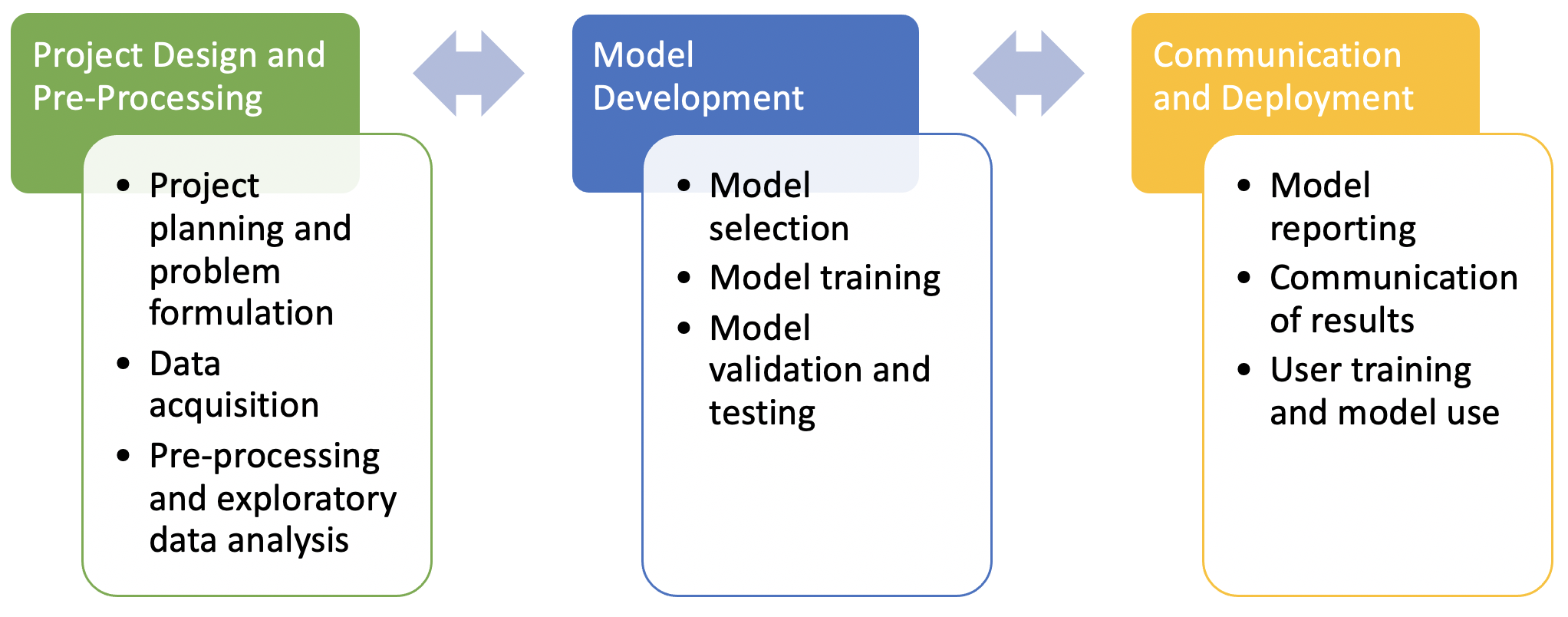Transparent Reporting Reflect-list¶
In [CRAM15], Gary Collins et al. introduced the TRIPOD Statement—a checklist of 22 items they deemed “essential for transparent reporting of a prediction model study”. The purpose of the TRIPOD Statement was to improve the transparency of reporting of prediction model studies by providing a systematic procedure that all prediction model studies should complete, regardless of their study methodology.
In a more recent review of the published and preprint reports of COVID-19 prediction models, Wynants et al. [wynantsprediction2020] found that “proposed models are poorly reported, at high risk of bias, and their reported performance is probably optimistic.” They recommend that systematic reporting guidelines such as the TRIPOD statement should be followed, in order to minimise the harm that could arise from using such models in clinical decision-making.
In the following sections we offer scientific and ethical rationale for each of the 22 items in the TRIPOD checklist, to enable the teams to reflect upon the steps that they should take at the respective stages of the project workflow. Each item includes the original description, and you navigate through the additional components using the associated tabs:
Example: Item Description, Rationale, and Relevant Stage
Description
Discuss any limitations of the study (such as nonrepresentative sample, few events per predictor, missing data).
Limitations should be placed in perspective (e.g. current research directions and practices) and each that is problem identified should include a critical discussion of how the problem may lead to potentially unintended social impacts, including any associated uncertainty.
Reporting limitations offers researchers the opportunity to reflect on and deliberate over the possible impacts of their study (e.g. on scientific or social practices), including the degree of uncertainty associated with these impacts. Doing so offers researchers an opportunity to exercise responsibility, to engage in reflexive practices, and to strengthen their research by connecting with subsequent research efforts that may be able to address the identified impacts.

In addition to the use of the TRIPOD checklist and the hypothesis service, which is enabled on all of the subsequent pages, there is also a form that can be downloaded and used to document the steps and processes associated with each of the items. A version of the original TRIPOD checklist can be found here.
PROBAST: Risk of Bias¶
It is also worth mentioning that many of the original authors associated with the TRIPOD statement have also developed PROBAST: a tool to assess risk of bias in prediction model studies, which was originally designed for systematic reviews and the critical appraisal of prediction model studies (e.g. by researchers or decision makers interested in evidence-based medicine). [wolffprobast2019]
The biases included in our self-assessment take a broader, sociotechnical perspective than PROBAST, but the two tools are certainly complementary.
